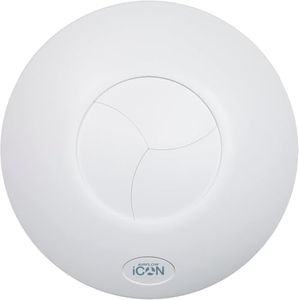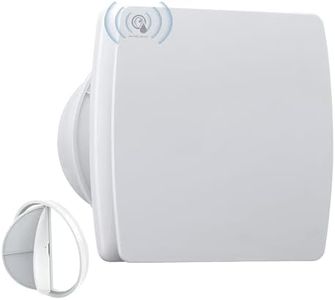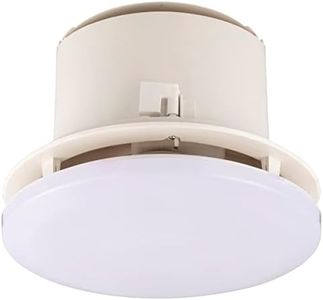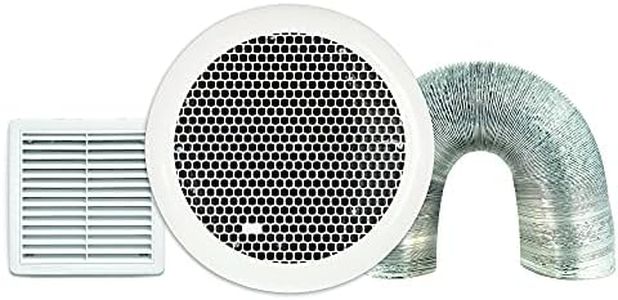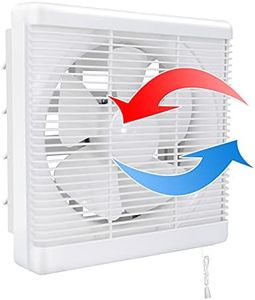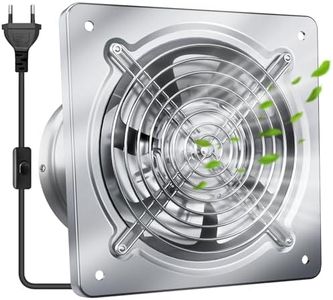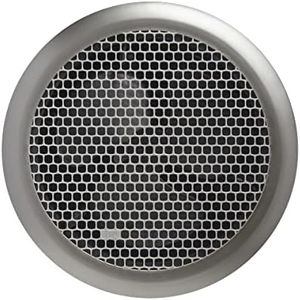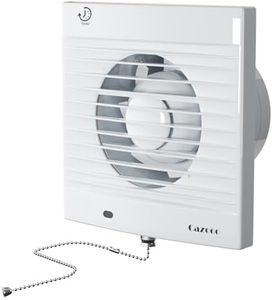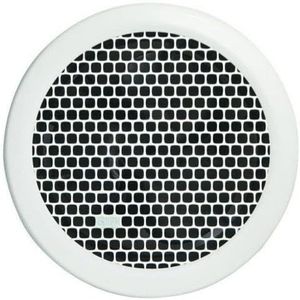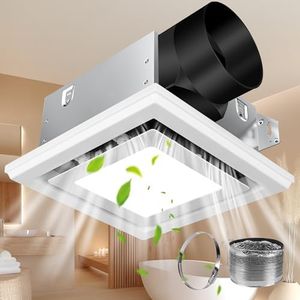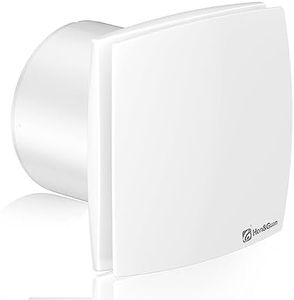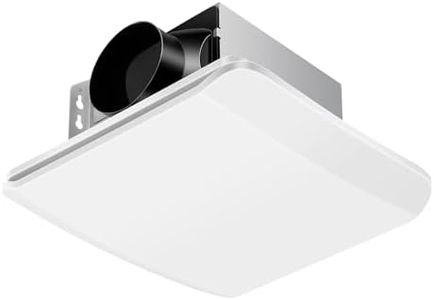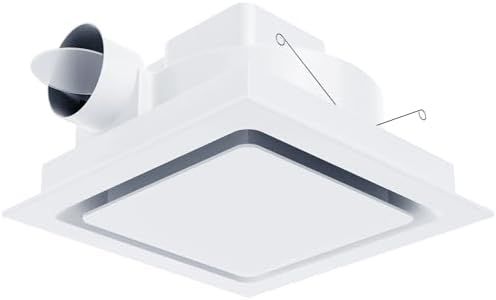We Use CookiesWe use cookies to enhance the security, performance,
functionality and for analytical and promotional activities. By continuing to browse this site you
are agreeing to our privacy policy
10 Best Bathroom Fans
From leading brands and best sellers available on the web.By clicking on a link to a third party's website, log data is shared with that third party.
Buying Guide for the Best Bathroom Fans
Choosing the right bathroom fan is essential for keeping your bathroom fresh, preventing mold and mildew, and removing excess moisture from the air. When shopping for a bathroom fan, it’s important to understand how its features will match your bathroom size, usage habits, and any special requirements you might have, such as noise levels or additional lighting. Assess your needs by considering how often your bathroom is used (by how many people and for showers or baths), and decide what extra functions you’d like along with basic ventilation.Airflow (CFM)Airflow is measured in cubic feet per minute (CFM) and indicates how much air the fan can move in a minute. This is important because a higher CFM means more effective removal of moisture, odors, and steam from your bathroom. Bathrooms come in different sizes, and the right CFM depends on your room's dimensions. Small bathrooms (under 50 square feet) usually require fans rated around 50 CFM. Medium bathrooms (50-100 square feet) benefit from fans in the 70-100 CFM range. Large bathrooms or those with multiple fixtures may need 110 CFM or more. To pick the right value, you should measure your bathroom (length × width × height), consider how often it’s used, and choose a fan with enough power to ventilate the space efficiently.
Noise Level (Sones)The noise level of a bathroom fan is measured in sones. A lower sone rating means the fan is quieter, which can be important if you want a peaceful bathroom. Fans with ratings under 1.5 sones are very quiet and almost unnoticeable, making them good for master bathrooms or spaces near bedrooms. Fans between 2.0–4.0 sones are moderately quiet and suitable for main or guest bathrooms. Anything above 4.0 sones might be noticeably loud and can be distracting. When choosing, think about how sensitive you are to noise and where the bathroom is located in your home.
Installation TypeThere are different installation types for bathroom fans: ceiling-mounted, wall-mounted, or inline (remote). This spec matters because it determines how the fan connects to your ductwork and whether it fits the available space. Ceiling-mounted fans are the most common and are installed directly above the shower or toilet area. Wall-mounted fans suit bathrooms where ceiling installation isn’t practical. Inline fans are installed remotely (like in the attic) and can serve multiple bathrooms or very large spaces with just one motor. When picking, check your bathroom’s layout, existing ductwork, and where you want the fan to vent air.
Extra FeaturesSome bathroom fans come with added features such as built-in lights, humidity sensors, or heaters. Built-in lights are useful if you want to combine lighting with ventilation, especially in smaller bathrooms with limited ceiling space. Humidity sensors automatically turn the fan on or off based on the moisture level, helping prevent mold without you having to remember. Heaters can provide extra warmth after a shower. Decide what conveniences are important for your daily routine—if you want a 'set and forget' option, look for humidity sensors, or if lighting is limited, consider a fan with a built-in light.
Energy EfficiencyEnergy efficiency tells you how much power the fan uses while running. Efficient fans can lower your electricity costs and are better for the environment. Models labeled as 'Energy Star' use less energy for the same airflow. If you plan to run your fan for long periods or are environmentally conscious, choosing an efficient model is a smart choice. Always check the energy rating and pick a fan that balances good airflow with low energy consumption.
